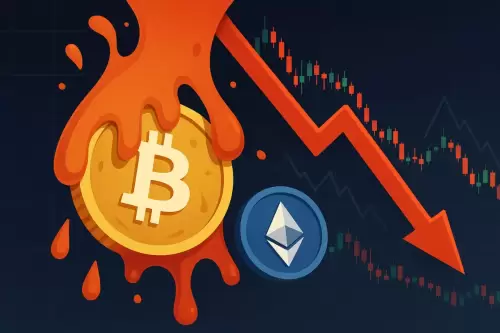 |
|
 |
|
 |
|
 |
|
 |
|
 |
|
 |
|
 |
|
 |
|
 |
|
 |
|
 |
|
 |
|
 |
|
 |
|
Cryptocurrency News Articles
Vitalik Buterin and Charles Hoskinson Spar Over Zk-Proof Design in a Technical Twitter Discussion
May 22, 2025 at 08:15 pm
A technical discussion on X (formerly Twitter) between Ethereum co-founder Vitalik Buterin and Cardano founder Charles Hoskinson quickly blew up
A casual technical discussion on X (formerly Twitter) between Ethereum co-founder Vitalik Buterin and Cardano founder Charles Hoskinson quickly blew up into a wider critique of blockchain design, governance, and the practical, real-world viability of zero-knowledge (zk) proof systems.
It all began with a mathematical musing from Ethereum co-founder Vitalik Buterin, who explored the theoretical efficiency of distributing zk proof workloads across multiple provers.
“A fun math aside, on the idea of splitting a large zk proving workload between multiple provers. Suppose we have $N$ provers, and we have a proving workload that we split into $N$ parts (so, one part per prover). We require provers to pre-register, but registration is…
Buterin proposed that by using open-access registration and fault-tolerant retries, the system could achieve verification in logarithmic star time–a function that grows incredibly slowly.
Buterin’s ZK-Proof Math Sparks Hoskinson’s Real-World Rebuttal
While the math was elegant, Charles Hoskinson quickly pounced on its real-world impracticalities, calling the model naive in the face of adversarial attacks, cloud failure risks, and hardware bottlenecks.
Hoskinson didn’t just pick apart the math; he used the opening to paint a bigger picture of what he views as Ethereum’s systemic flaws. He argued that Buterin’s proposed retry model for zk-proofs would crumble when faced with Sybil attacks, where bad actors could spin up thousands of fake provers just to jam the network.
This, he explained, is because the hefty hardware demands of actual zkEVM circuits make a super-quick three-second retry loop unworkable. He also red-flagged the risk of network self-sabotage, where escalating retries could flood the system with unneeded bandwidth and computational burdens.
Cardano vs. Ethereum: Governance and Layering Philosophies Clash Again
This isn’t the first time Hoskinson has positioned Cardano as a more grounded alternative to Ethereum.
Back in September 2024, he criticized Ethereum’s governance, comparing it to a “dictatorship” and emphasizing how Cardano’s Voltaire-era overhaul avoids the extremes of both Bitcoin’s minimalism and Ethereum’s founder-centric approach.
Buterin, on the other hand, has not remained idle. Facing growing scrutiny over Ethereum’s reliance on Layer-2 networks like Arbitrum and Optimism, he recently proposed a bold Layer-Zero upgrade.
This next-generation architecture would replace the Ethereum Virtual Machine with a zkVM based on RISC-V standards, dramatically improving efficiency.
According to preliminary estimates, the upgrade could slash proof sizes from 346MB to just 1.5MB, reduce computation cycles by over 95%, and boost transaction throughput up to 30-fold using GPU acceleration.
Yet, Hoskinson remains skeptical of Ethereum’s direction. He argues that an overreliance on Layer-2s siphons value away from the base layer, risks fragmentation, and leaves Ethereum vulnerable to being overtaken by more robust alternatives or even Bitcoin.
He has gone so far as to claim Ethereum may not survive the next 15 years if it continues along this path.
The information presented in this article is for informational and educational purposes only. The article does not constitute financial advice or advice of any kind. Coin Edition is not responsible for any losses incurred as a result of the utilization of content, products, or services mentioned. Readers are advised to exercise caution before taking any action related to the company.
Disclaimer:info@kdj.com
The information provided is not trading advice. kdj.com does not assume any responsibility for any investments made based on the information provided in this article. Cryptocurrencies are highly volatile and it is highly recommended that you invest with caution after thorough research!
If you believe that the content used on this website infringes your copyright, please contact us immediately (info@kdj.com) and we will delete it promptly.






























































